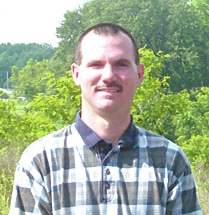The Ohio Department of Natural Resources is asking the public to participate in surveying wild turkeys and ruffed grouse by reporting sightings of these two species.
Every year, the ODNR Division of Wildlife conducts a turkey and grouse brood survey to estimate population growth. The brood survey relies on the public to report observations of all wild turkeys and ruffed grouse seen during May, June, July and August. Wildlife watchers and hunters can report observations at the Turkey Brood Survey page at wildohio.gov.
Information submitted to the brood survey helps to predict future population changes and helps guide the state’s hunting regulations. More than 7,900 turkeys were reported during the 2015 survey, with an average of 1.82 young turkeys (poults) per adult hen turkey. This average was lower than the long-term average of 2.5 poults per adult hen.
State and county information is available from past wild turkey or ruffed grouse observations online under the Forest Species Overview page at wildohio.gov. Biologists began tracking summer observations of wild turkeys in 1962. Ruffed grouse were added to the survey in 1999.
Just this past week, we had to stop the the truck so that a momma hen and her newly hatched brood could cross the road. She must have had a dozen or more in a tight little ball right behind her. It was good to see a good hatch like that especially with as few birds that I saw during the season.
• Central Ohio sportsmen and women who are interested in becoming Hunter Education Instructors are encouraged to register for a training workshop in Columbus, according to the ODNR. The workshop will take place on Saturday, Aug.13 and Sunday, Aug. 14.
Training will be held at the Wildlife District One office located at 1500 Dublin Road in Columbus from 8 a.m. to 5 p.m. each day. There is no cost to participate; those interested in attending must register by calling 1-800-wildlife (945-3543).
Participants must attend both days of training, be at least 18 years of age and have successfully completed a hunter education course. Ohio currently has 1,700 volunteer instructors who train thousands of hunters each year to be safe and responsible in the field.
For more information on becoming a hunter education instructor visit the hunter education pages at wildohio.gov.
• Applications will soon be accepted for controlled deer and waterfowl hunts on selected areas during the 2016-2017 season. The application acceptance period opens Wednesday, June 1, and runs through Sunday, July 31.
These special hunts are held on selected areas to provide additional opportunities for Ohio’s hunting enthusiasts. All applicants, youth and adult, must possess a 2016-2017 Ohio hunting license and meet the age requirements in order to apply for a controlled hunt.
Hunters can apply for the controlled hunts by completing the application process online using the Wild Ohio Customer Center at wildohio.gov or by calling 800-WILDLIFE (800-945-3543) and requesting a mail-in application. There is a non-refundable application fee of $3 per hunt.
Hunters will be randomly drawn from submitted applications. Successful applicants will be notified and provided additional hunt information by mail and email. Applicants are encouraged to visit the Wild Ohio Customer Center to view the status of their application and, if selected, print their controlled hunt permit.
More specific information about hunt dates and locations, including opportunities dedicated to youth, women and mobility-impaired hunters, can be found at wildohio.gov on the Controlled Hunts page. ODNR ensures a balance between wise use and protection of our natural resources for the benefit of all. Visit the ODNR website at ohiodnr.gov.
• Anglers planning to pursue striped bass, white bass and hybrid-striped bass are reminded to check the 2016-2017 Ohio Fishing regulations before dropping their line in the water. For all Ohio waters, except Lake Erie and areas immediately upstream in its tributaries as specified in the regulations book, the bag limit is 30 fish per day, with no more than four of those fish being larger than 15 inches.
White bass and hybrid-striped bass congregate in large schools throughout the year and can easily be caught in larger numbers, making them vulnerable to overharvest. At small sizes, these three species are difficult to tell apart so the same regulations have been set to protect all of them.
These inland regulations were implemented to distribute the harvest by limiting the number of fish, especially larger fish that an angler can harvest in a day, while still providing an opportunity to keep some large fish. This should help ensure that white bass populations continue to provide quality fisheries into the future and help hybrid-striped bass reach larger sizes often sought by anglers. This change also makes inland regulations consistent with Ohio River regulations.
White bass are a popular sport fish that can be caught in large numbers, especially during the spring when they migrate into tributaries of larger water bodies to spawn. These fish are typically 10 to 14 inches long and usually weigh about 1 pound, but can grow to 21 inches and reach a weight of 4 pounds.
Striped bass were previously stocked into Seneca and Kiser reservoirs to provide brood-stock for hybrid-striped bass production, and they are still available for anglers to catch. Hybrid-striped bass are stocked into 10 reservoirs throughout Ohio, the Muskingum River and the Ohio River to provide trophy fishing opportunities. A hybrid-striped bass is a cross between a striped bass and a white bass. This sport fish is typically 12 to 22 inches long and weighs 1 to 5 pounds, but a hybrid-striped bass can reach more than 30 inches and 18 pounds.
Information on the ODNR Division of Wildlife’s fisheries research and management programs, fisheries resources, fishing reports, maps and links to other Lake Erie web resources are available at wildohio.gov.
Until next time, Good Hunting and Good Fishing!




